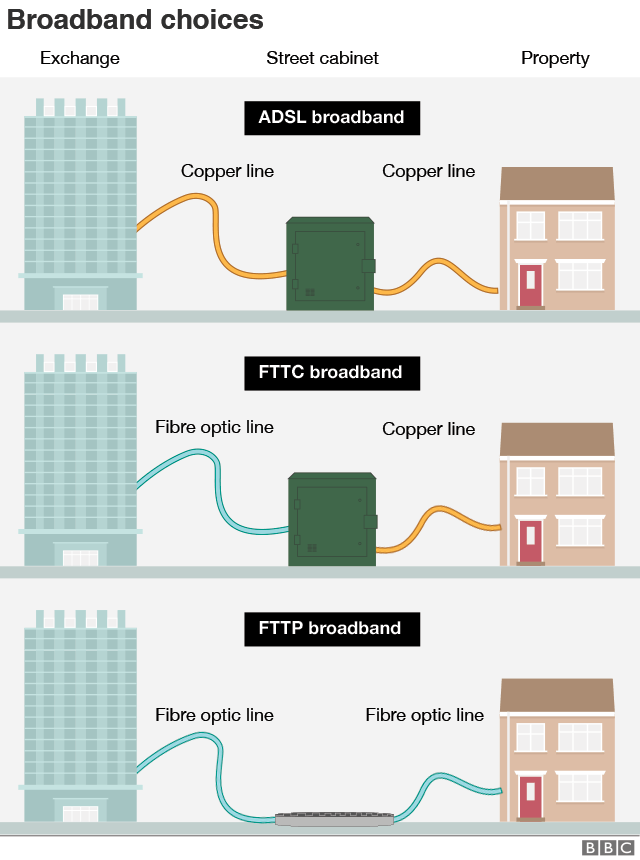
The government is planning to spend £5bn on rolling out superfast full-fibre broadband to the most remote parts of the UK.
But what is full-fibre broadband and how fast will it be?
Chancellor Sajid Javid has said the £5bn investment would get full-fibre broadband to the hardest-to-reach 20% of the UK.
Prime Minister Boris Johnson has said full-fibre broadband is needed to improve the UK's infrastructure and productivity. He wants full rollout by 2025. That target is eight years ahead of the government's original goal of 2033, a date Mr Johnson described as "laughably unambitious".
Last year, a government report estimated the cost of covering the UK with full-fibre broadband by the old deadline of 2033 would be about £33bn.
With more people using data-intensive streaming services, smart devices and video calls, we need more data.
The average household used 240 gigabytes of data a month in 2018, up 26% on the previous year, telecoms industry regulator Ofcom said.
It also said there could be several other benefits to consumers and businesses:
Faster connections make it quicker to download films, play online games or use streaming services.
Broadband is a term for high-speed connections carrying internet data and other types of traffic.
There are three main types of broadband connection that link the local telephone exchange to your house:
Copper has been the backbone of the internet infrastructure, as it's used in the telephone network across the UK and goes into most homes.

But it's old and slower than fibre optic cable, which is made from glass or plastic and uses pulses of light to transmit data.
On the other hand, digging up and replacing copper with fibre optic cable to reach into people's homes is expensive and involves a lot of work.
Currently, the UK government defines superfast broadband as having speeds greater than 30 megabits per second (Mbps). A megabit is the standard measurement of internet speed.
Ultrafast is defined as a speed greater than 100Mbps.
A connection using both fibre and copper (FTTC) can reach speeds of up to about 66Mbps.

But a full-fibre connection (FTTP) - with no copper - can offer much faster average speeds of one gigabit per second (Gbps) - that's 1,000Mbps. It could potentially offer speeds in terabits per second in future. (One terabit equals 1,000 gigabits.)
There are other types of very fast connection as well. Virgin Media uses a different type of cable for the last section that comes into your house, which in theory can offer speeds of up to 10Gbps.
There is also a service called G.fast, which uses a special pod to boost the speed of the standard copper cable connection.
The availability of the fastest broadband is still very limited.
In February, Virgin Media began a small trial of broadband in Cambridgeshire using fibre optic cable to give households speeds of 8Gbps (gigabits per second).

Last year, another company, Hyperoptic, tested speeds of up to 10Gbps in a home in east London.
At the moment, the UK ranks well behind some other European nations including Latvia, Lithuania and Spain, where roughly half of all homes have access to the fastest connections.
One of the companies planning to launch the new faster 5G mobile services believes they will be so fast that many homes in the UK won't need a fixed broadband connection.
Three UK told the BBC last year that there would be enough capacity on 5G to match the speeds of the fastest fibre cable connections. Ofcom suggests that in time 5G could offer speeds of 20Gbps.

One advantage of 5G is that it uses a wireless link for the connection to your house, instead of cabling.
This could be particularly useful in rural areas which have lagged behind in the provision of faster broadband.
But some experts caution this may also be a disadvantage as the wireless signal would not be as stable as a fixed-line connection and could drop out at times.